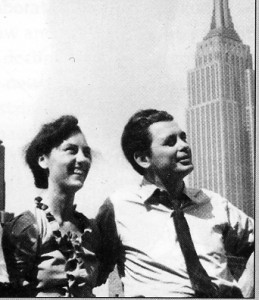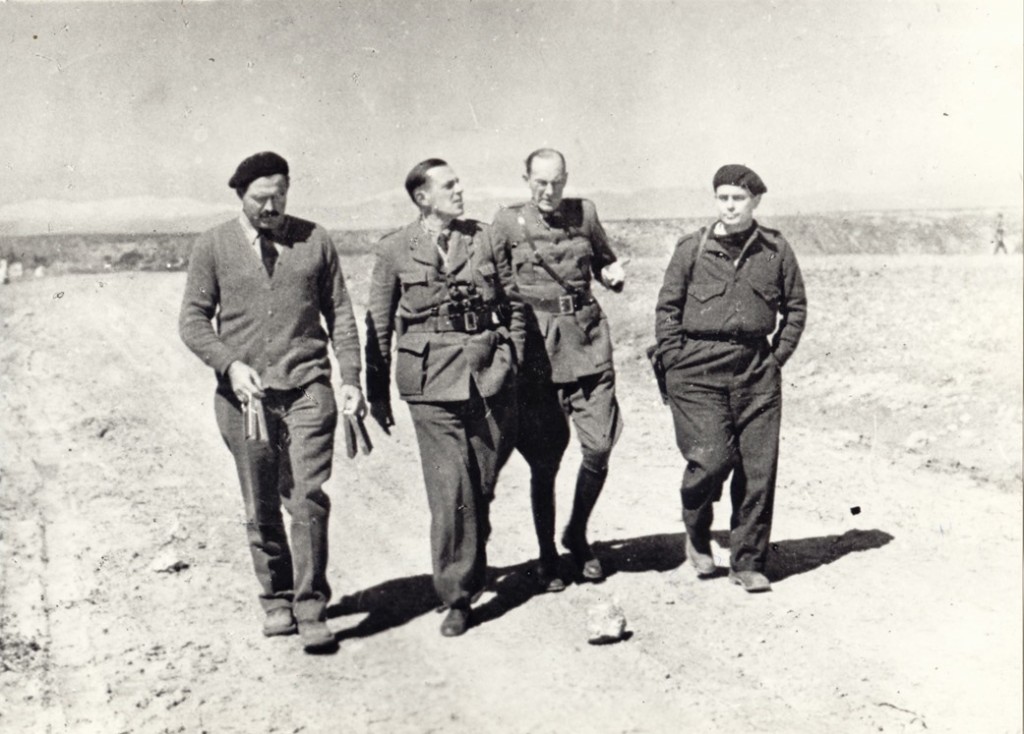Documentary, Camouflaged: How Did The Spanish Earth Reach A Wide US Audience?
In the 1930s, documentaries were shut out of mainstream commercial movie houses. Joris Ivens’s legendary film about the Spanish war reached thousands of viewers nonetheless.
Of the many films produced to support the fight against Franco, none match the renown of The Spanish Earth (1937, directed by Dutch documentarian Joris Ivens with the involvement of Ernest Hemingway. Nearly ninety years after its release, it remains a landmark in documentary history, offering—in the words of Ivens biographer Thomas Waugh—“the definitive model of the international solidarity genre.” While Ivens and his compatriots hoped to bring the film to millions to inaugurate broader support for the beleaguered republic, The Spanish Earth never reached an audience comparable to those regularly attained by Hollywood feature films. Still, thanks to the efforts of progressive activists and the film’s scrappy distributor, it garnered considerable press coverage and reached thousands at a time when documentaries—especially those advancing “radical” causes—were entirely shut out of mainstream commercial movie houses.
By the time he arrived in the United States in 1936, Ivens, a Communist, was already a respected filmmaker among the global Left. He also shared their outrage over America’s inaction to aid the Spanish Republic. In crafting what would become The Spanish Earth, Ivens and his collaborators (who included Hemingway, playwright Lillian Hellman, and poet Archibald MacLeish) carefully calibrated the film’s scenario and voiceover to appeal to politically moderate viewers. As Ivens recalled in 1969, “we were too eager for a wide theatrical release to risk being either too ‘political’ or too ‘educational.’” References to “fascism” and “Communism” were avoided. Instead, the 53-minute film balances footage shot by handheld camera on the front lines with humanistic imagery of rural Spanish life: a soldier eating a piece of fruit, fresh bread being served for breakfast; the film’s quasi-protagonist Juan reuniting with his family. Put simply, the documentary casts the war in Spain as a fight for human survival.
Ivens, accompanied on the ground by Hemingway, shot the film in the spring of 1937. He returned to the U.S. to edit. In June, Hemingway performed a live reading of his narration over a silent “rough cut” of the film at a meeting of the CPUSA-sponsored League of American Writers. A preview of the final version screened at the White House on July 7 and at the Spanish Pavilion at the Paris International Exposition later that month. Ivens made the rounds in Los Angeles, presenting The Spanish Earth at the posh Ambassador Hotel and in the homes of Joan Crawford, John Ford, and Frederic March. These West Coast screenings reached an estimated audience of 6,000 and yielded $20,000 in donations that were used to buy materials for Loyalist troops.
The official theatrical premiere took place at New York City’s 55th Street Playhouse, a prestigious arthouse theater, on August 20, 1937, and garnered praise from mainstream critics and leftist journalists. The Nation optimistically reported that the producers were on their way to distributing the film to more than 800 theaters, surely inaugurating a groundswell of support for the Spanish Republic.
This optimism was misplaced. Documentaries were always a hard sell to exhibitors; conservative hostility to the Republican cause likely made commercial distributors and exhibitors skittish. With few options, The Spanish Earth team settled on small New York distribution company Garrison Films, helmed by labor activist Tom Brandon, who was known as “a radical and deeply sympathetic to the Spanish cause.” The North American Committee to Aid Spanish Democracy—which had donated $4,000 to the film’s production—was authorized to screen the film widely at political meetings for fundraising. While Ivens and his team were relieved to find a distributor, Garrison tended to distribute Soviet feature films and short films to noncommercial institutions; it had few ties with major theatrical exhibitors. Thus, The Spanish Earth found itself relegated to the marginal networks typical of the era’s political documentaries. For Ivens, this disappointment still stung decades later: “We fell back into the limited channels available for documentary that we thought we could get out of this time.”
Conscious of the market limitations imposed on nonfiction films of all political persuasions, Garrison Films devised a nonpartisan marketing strategy for exhibitors. The company advised against using referring to The Spanish Earth as a “documentary” and recommended touting the prominent cultural figures, like Hemingway, affiliated with the project:
Sell … as a story of people, their struggle, in human terms … avoid … such phrases as “a documentary film” … the [great] interest [has] a definite relationship to the film’s distinguished collaborators… They are not arty, they are not amateurs, they are not propagandists. They are brilliant and successful writers on the commercial screen, the national radio networks, [and] Broadway… Use their names and their importance to give importance to your showing of THE SPANISH EARTH.
Garrison also prepared a set of promotional materials, including a large poster for exhibitors with a collage of newspapers overlayed on a map of the United States under the headline “Unprecedented Acclaim!” This promotional gesture—a visual blanketing of the country from coast to coast—served, perhaps, more as wish fulfillment for a mass nationwide circulation that would never materialize.
Yet rather than dismissing the film’s circulation as a failure by comparing it to Hollywood, we should acknowledge that The Spanish Earth is very likely the most widely screened leftist documentary in the United States of the entire interwar period. Through the collaborative efforts of Ivens and his producers, Garrison Films, and anti-fascist activists, The Spanish Earth was exhibited across 30 states and Puerto Rico from the fall of 1937 to the end of ’38. It screened in small independent movie theaters and urban arthouses (even if in Pennsylvania it required the Governor overriding an initial ban by censors to do so). It was shown in noncommercial venues, including colleges and universities, union halls and ethnic worker clubs, and “red” summer camps, and at fundraisers held by the American Medical Bureau, the Lincoln Battalion, North American Committee to Aid Spanish Democracy, and other like-minded groups. Prints of the film were also purchased by small distributors in Brussels, London, and Paris, as well as by individuals in Argentina and the Netherlands.
Screenings of The Spanish Earth continued intermittently into 1939, though largely ceased after Franco’s victory on April 1. By this time, Garrison Films and Ivens had shifted gears to promote his latest documentary, The 400 Million, about China’s resistance to Japanese aggression. The film would suffer a similar fate as its predecessor.
Tracking The Spanish Earth’s circulation illustrates the structural limitations imposed on American leftist political documentary but also the profound political commitments and solidarity shared among the global Left and fellow travelers during the Popular Front period. Ivens’s film remains a landmark work of documentary art birthed by the urgency of political and humanitarian crisis. It also testifies to the idealistic faith in documentary’s ability to transform the world—an ethos that continues to inspire progressive activists to produce and disseminate media today.
Dr. Tanya Goldman is a Visiting Assistant Professor of Cinema Studies at Bowdoin College. She can be contacted via her website tanyagoldmanphd.com. Digitized copies of The Spanish Earth circulate widely online, including via the Internet Archive and YouTube.















